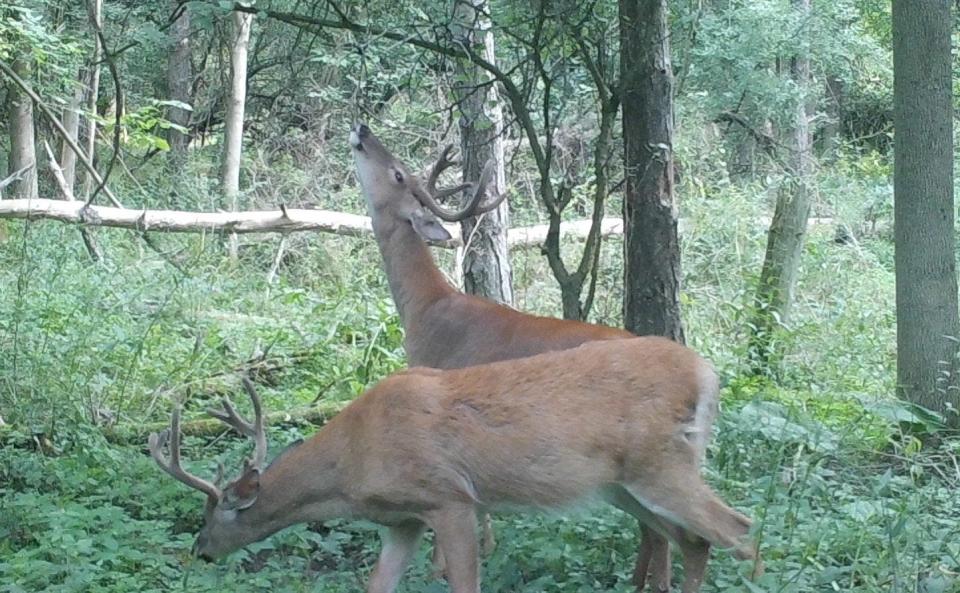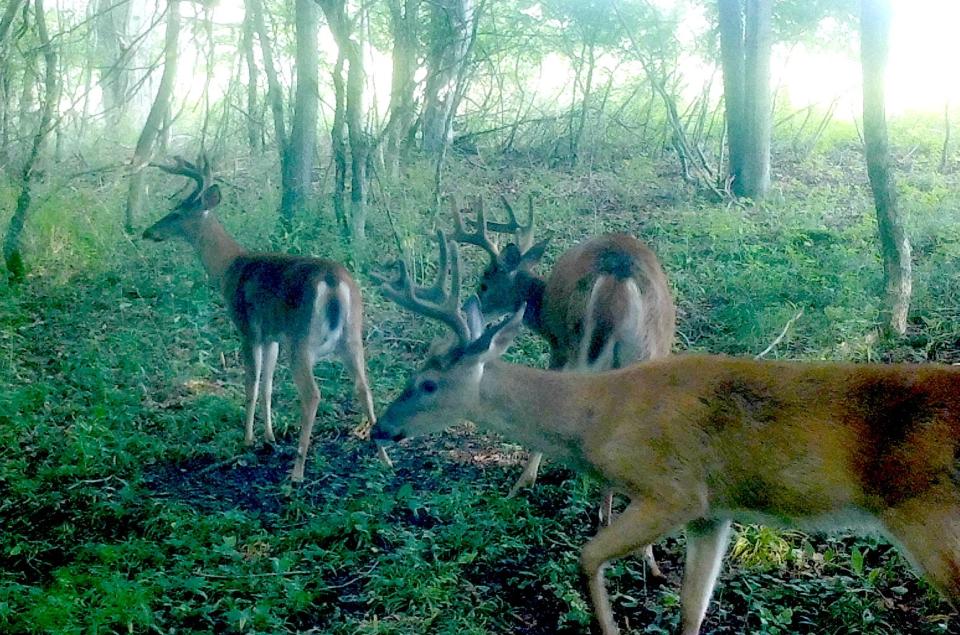How deer hunting practices have changed over the years as bow season draws near
All of a sudden, archery season will be upon us.
Sneaks up like a frost in the morning after a warm, Indian summer afternoon the day before.
Seems like summer is never going to end.
Then bow season is here.
Every year it's the same.
Hearts beat harder, blood pumps quicker, fingers get cold.
Always the same.
Falling leaves, fresh scrapes, obsessive preparation and ultimate frustration, along with emotion-charged shots while not daring to breathe.
But how things have changed in a half-century of carrying a bow and arrow while pursuing whitetails.
Back in the early 1970s, the whitetail population was a fraction of what it is today.
According to the NYSDEC historical records, in 1971, 48,000 deer were harvested statewide. By 1978 that number grew to 85,000 deer legally harvested. In 1990, 190,000 whitetails were harvested in New York state, and by 2013, 245,000 deer were taken. Last year (2022) the number of deer harvested according to the DEC was 232,000.
How bows and hunting equipment have changed

Tagging a big antlered buck with an arrow back in the late 1960s and early 1970s was almost unheard of.
Way back then, no one owned a compound bow because they had not yet made it to the popular market.
I remember first seeing my first compound bow at the Belmont Archery shop and it was considered an oddity, a gimmick. Something to laugh at.
In the late 1960s and early ''70s, if you were a bow hunter, you hunted with a recurve bow.
Maybe a couple guys had long bows.
But recurves ruled.
And there were no deer calls on the market and nobody had heard of antler rattling or mock scrapes.
No expandable heads or portable tree stand companies even existed then. And camouflage patterns were basically a variation of traditional military designs.
No such thing as Mossy Oak, Advantage, Realtree, and all the other camo companies. And certainly no Scent-Lok or Scent Blocker (carbon-impregnated clothing to minimize human scent) and all the other technical hunting paraphernalia, so basic to today's bow hunter.
No infrared trail cams, and no ultraviolet blood-tracking devices or ozone de-scent machines, or fiber-optic sights and pins, or even food plots, for that matter. And no plastic vanes on arrows. Feathers on the arrow shaft instead.
Back in the early 1970s wooden (cedar) arrows were the standard, but as the 1980s drew near, manmade materials such as aluminum and glass hit the market, soon to be followed by composite and finally graphite arrows.
Oh, and no ATVs.
We walked up the hills, down the hills, dragged our deer out with our legs and backs. We climbed trees, but stood on limbs.
Outdoors: Lyme disease cases soar across the Southern Tier. Here's what you need to know
Attitudes towards taking doe have changed, too

The sport of bow hunting has changed in other ways, too, besides the gear we use.
The science, knowledge, and understanding of deer behavior were also in its infancy back in the 1970s.
Back then it was common understanding to hear statements like, "Bucks remove their velvet to 'polish up their antlers.'"
One of the biggest changes, showing how hunters have evolved, has to be in the attitude toward tagging doe.
We've come "full circle."
Back in the "old days" before the compound bow, we were happy to tag any whitetail because it was such a challenge, given the limiting nature of the equipment along with the relatively low deer population. But quickly, in subsequent years, there followed as the '80s dawned, the popular, though unwritten demand that deer hunters should only shoot bucks.
Matter-of-fact, many bow hunters and organized sportsmen actually campaigned against shooting doe.
It was only until later in the '90s when the rank and file deer hunter began realizing that deer management and the ecological stewardship of the woods necessitated taking doe in most of the whitetail's range.
New York's DEC and the Pa. Game Commission, along with other management agencies, were on the downside of the whitetail learning curve, finally calling “doe permits” deer management permits, as the whitetail population in some areas was becoming too high.
More from Oak Duke: How a tree stand 'makeover' can make the difference deer hunting this fall
Through the 1990s, the whitetail population in New York state and in Pennsylvania began to reach all time records. In response, the DEC allowed hunters to have extra permits, sometimes four or more! It was actually legal in NYS back then for an individual deer hunter to harvest seven or more deer in some areas!
In the Northeast, most state's deer populations peaked about the change of the millennia, in 2000.
With the record permits came record harvests, and now, almost a quarter of the way through the 21st century, the whitetail population in many areas is climbing back towards its high point.
The deer population ebbs and flows through the years as archery equipment, tactics, and hunting gear continually evolves and changes, as we have seen with the acceptance of the crossbow.
But what doesn't seem to change is that feeling of excitement.
Once again bow season is almost here, with its anticipation and adrenaline among the changing leaves.
— Oak Duke writes a weekly column.
This article originally appeared on The Evening Tribune: From recurves to crossbows: Bow hunting has changed over decades

